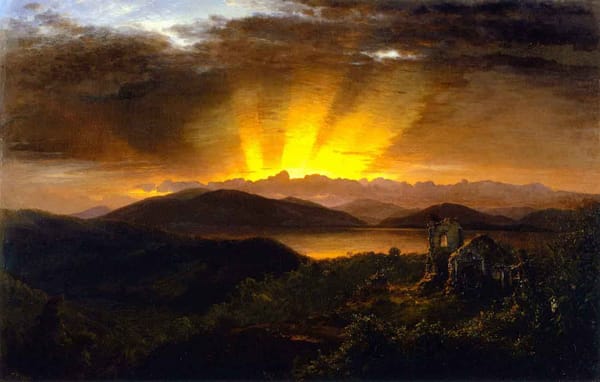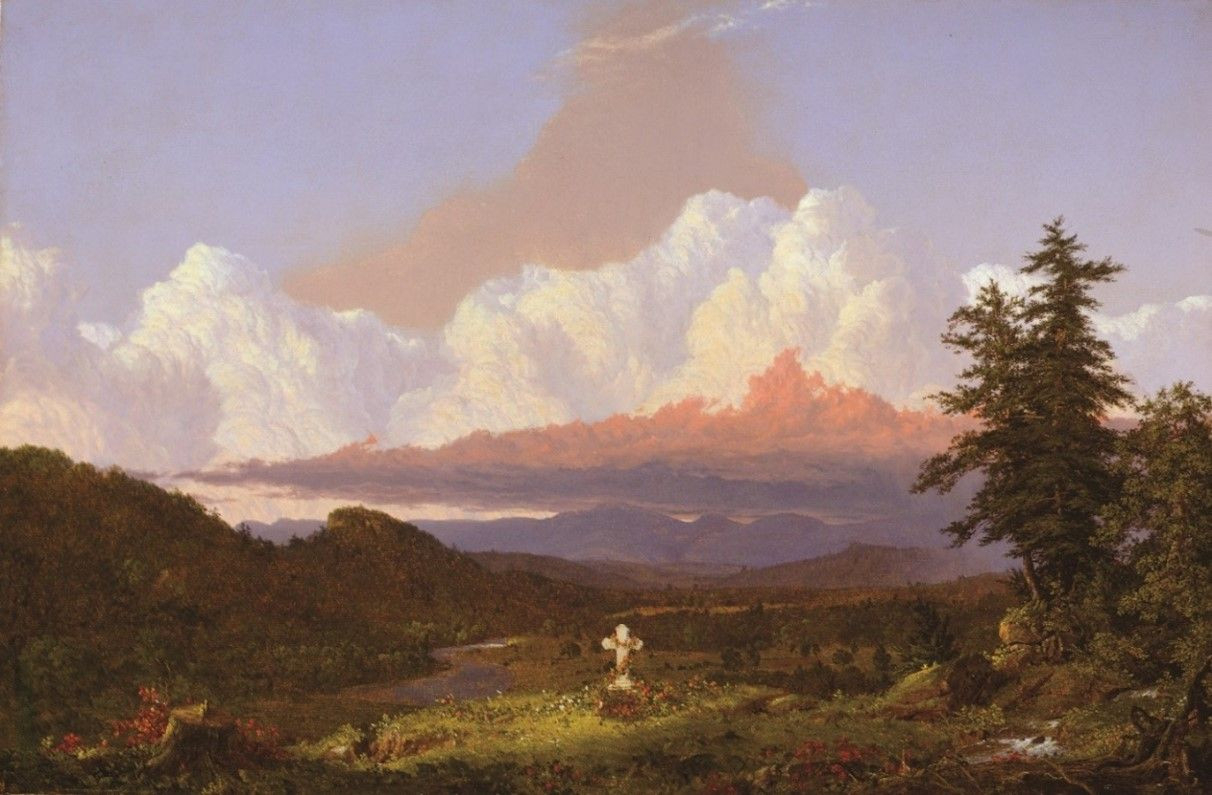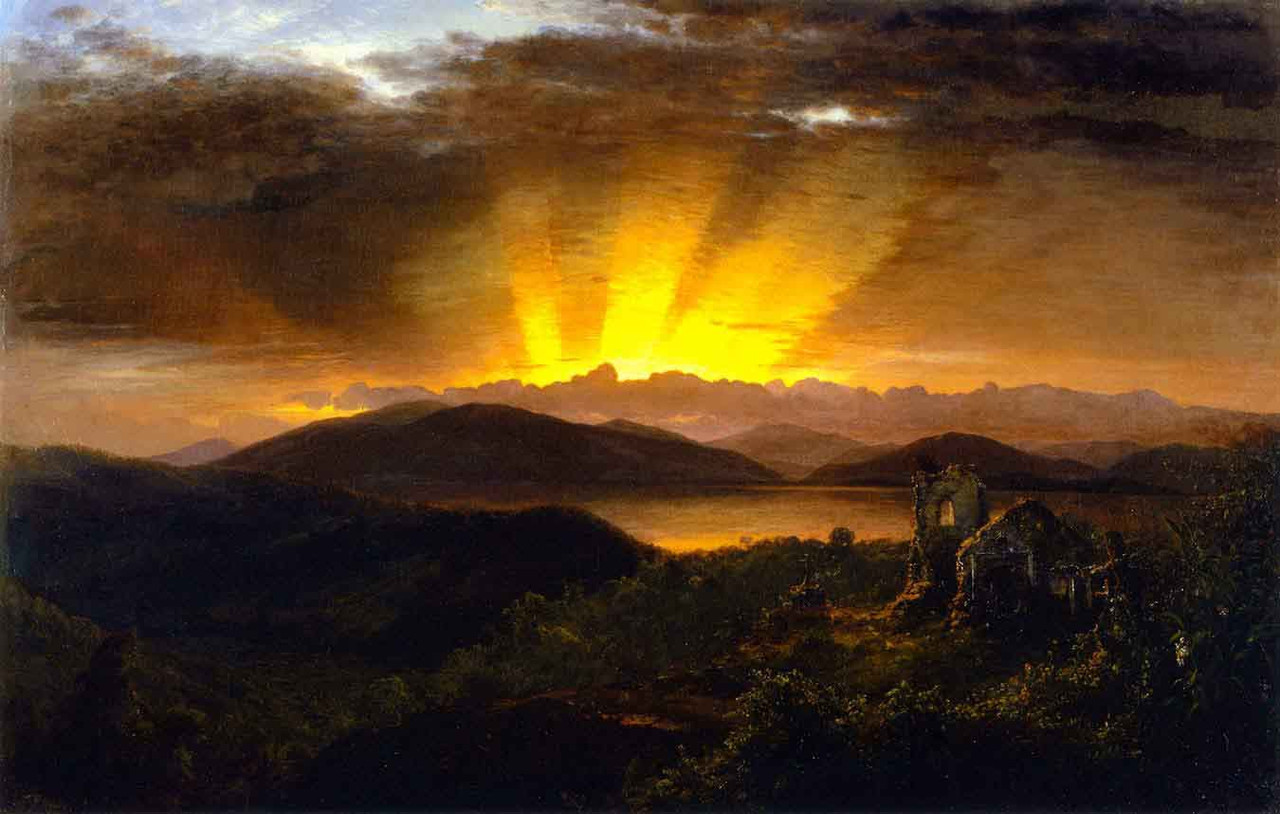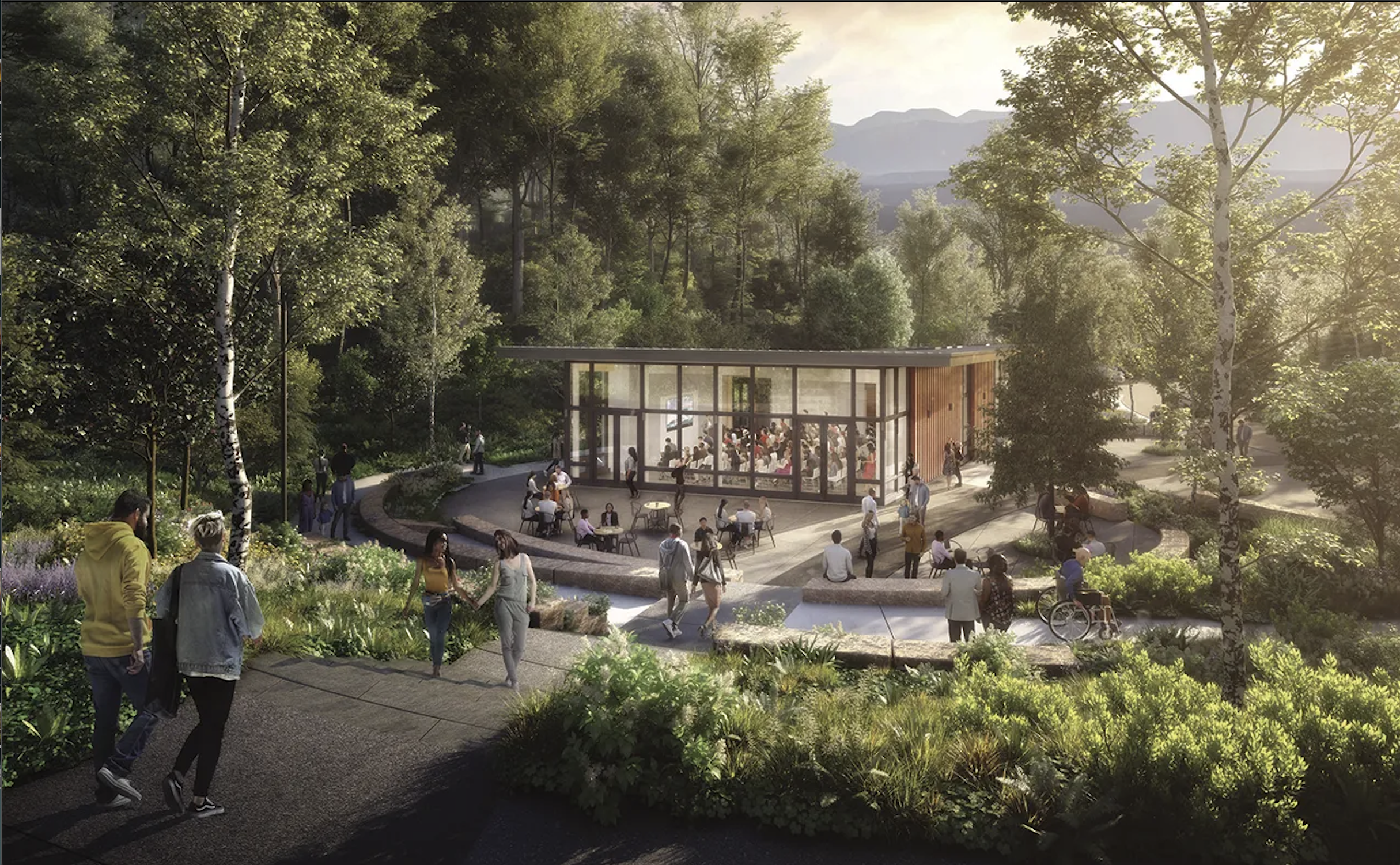"Afterglow" At Olana Explores Frederic Church's Art Of Mourning And Healing
Olana's summer exhibition invites audiences to share in the healing power of landscape.

Olana's summer exhibition invites audiences to share in the healing power of landscape.

"The After Glow" by Frederic Church.
Many of the emotionally charged landscape paintings of 19th-century master Frederic Church are infused with the memories of unimaginable loss and grief experienced by the artist and his family. A new exhibition Afterglow: Frederic Church and the Landscape of Memory at Church’s magnificent estate, The Olana State Historic Site just south of Hudson New York, explores how Church used painting (and existing in) nature to process the deaths of two of his children and his teacher, mentor and friend, Thomas Cole.
Multiple memorial paintings by Church and contemporaries are displayed throughout the house and in the Sharp Family Gallery. The exhibition lives in tandem with the Memories in Landscape project, a self-guided audio tour throughout the scenic property, which pairs donated natural wood benches with recordings of important memories from the families who gifted them.
The intense exhibition is a bold choice of focus for Olana during the height of the historic site’s busiest season, and in advance of the opening of the multimillion dollar, state-of-the-art Frederic Church Center for Art and Landscape later this year. But The Olana Partnership associate curator Allegra Davis, who conceived the project, said that in the “afterglow” of collective COVID trauma, and personal individual losses, every member of the general public can come to Olana to experience the healing properties of the landscapes that helped Church process his pain a century and a half ago.

"To the Memory of Cole" by Church
Access to Afterglow, and all else at Olana, is more accessible than ever this year thanks to the new Third Thursday program. Once a month, on the third Thursday of course, all tours and programming are free, including two daily Spanish language tours.
“I’m thrilled to share many of Frederic Church’s rarely seen memorial paintings with our visitors this year,” said Davis. “By bringing these pieces together, we’ll be able to shed light on not only an overlooked theme of Church’s career as an artist, but also the wider role of landscape in grief, remembrance, and healing in the nineteenth century and today.”
Shortly after the event of Cole’s sudden passing, Church, just 21 at the time, whipped up the memorial painting "To the Memory of Cole" (1848) in three months, for public display. The sun shines over mountains under uncharacteristically muddy clouds and an intense beam of light illuminates a stone cross on a hilltop in the center of the foreground. To those with an understanding of the usual nuance of Church’s symbolism, the screaming focus on the marble crucifix reads like the work of a man who has not yet fully processed his feelings. It is far from Church’s greatest work but what it does do is take the viewer on a poignant journey into the expressive mind of a young savant coping with the death of his master.
Ten years later, he would paint a much smaller sunset memorial entitled "The Evening Star" (1858). As an allusion, Polaris, no bigger than the pinprick in the upper right of the painting, shines more brightly than the raw cross in "To the Memory of Cole." It was this painting that set Davis down the path to curating Afterglow.
Church and his wife Isabel lost two children to diptheria. Afterwards, the couple traveled to Jamaica. A number of paintings from that trip are on display at Olana as part of Afterglow and clearly express both Church’s creative and healing process. For instance, though the artist was in a vibrant tropical paradise, most of the smaller works use a muted palette. One of the first large paintings shown on tours of Olana’s main house is "The After Glow." Made from a view captured in Church's mind during his recuperation in Jamaica, the painting’s sunset shoots beams of rich yellow and orange across the sky, both mournful and triumphant — a clear expression of his faith and the healing power of nature's beauty.
Upstairs, in the Sharp Family Gallery, keepsakes from the lost children are on display, including pocket-sized portraits, diary entries and locks of hair. There is also a large quilt on display, elegantly crafted by Church's living daughter Isabel (called Downie). The floral pattern is made of scraps of cloth collected from the closets of the people she loved most. The inclusion of the blanket brings some charming perspective to the exhibition. There is meaning in the contrast between the way the father finds solace peering over a grand lonely horizon, while the daughter stitches together a quilt made of tangible objects of memory, in which she can enwrap herself for comfort and warmth.
“Afterglow promises to be a fascinating exhibition examining a little-known but very important element of Frederic Church’s career as a painter,” said President of The Olana Partnership Sean Sawyer. “The Olana Partnership is also planning dynamic programs that will engage all visitors in his masterwork, Olana’s living landscape,”
The success of the exhibition is that Davis has not curated an exhibition about loss. Afterglow is about the living, and what comes after we process that loss. For all the examination of mourning, the project does not leave the viewer overcome with grief. Rather, it invites you to step back outside into the landscape of Olana and feel uplifted as we carry on.
Olana Historic Site
5720 State Route 9G, Hudson, NY
Grounds open every day, Free, 8am-sunset
Tours offered Tuesday- Sunday, 10 a.m.- 3:30 p.m.


